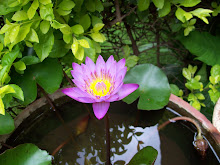
The Kali River valley in the Western Ghats is a biodiversity hotspot. Many unknown and hitherto unidentified species of plants are found here. There are quite a number of gingers. The picture above is a Glabba ginger flower, with its typical tail. The air itself smells fresh and invigorating in the jungle. The water of the numerous streams are pristine pure. This invaluable rainforest houses 31 different types of birds. The Malabar pied Hornbill is endemic to this region. This forest is diminishing due to human activity.
The air itself smells fresh and invigorating in the jungle. The water of the numerous streams are pristine pure. This invaluable rainforest houses 31 different types of birds. The Malabar pied Hornbill is endemic to this region. This forest is diminishing due to human activity.
 The air itself smells fresh and invigorating in the jungle. The water of the numerous streams are pristine pure. This invaluable rainforest houses 31 different types of birds. The Malabar pied Hornbill is endemic to this region. This forest is diminishing due to human activity.
The air itself smells fresh and invigorating in the jungle. The water of the numerous streams are pristine pure. This invaluable rainforest houses 31 different types of birds. The Malabar pied Hornbill is endemic to this region. This forest is diminishing due to human activity.








